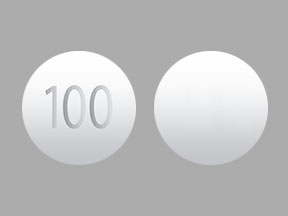Siklos Dosage
Generic name: hydroxyurea 1000mg
Dosage form: tablet, film coated
Drug class: Antimetabolites
Medically reviewed by Drugs.com. Last updated on Jan 4, 2024.
Recommended Dosing
The recommended SIKLOS dosing is described in Table 1.
| Dosing Regimen | Dose | Dose Modification Criteria | Monitoring Parameters |
|---|---|---|---|
| Initial Recommended Dosing | Adults: 15 mg/kg Pediatrics: 20 mg/kg once daily based on patient's actual or ideal weight, whichever is less. |
Monitor the patient's blood count every 2 weeks [see Warnings and Precautions (5.1)]. | |
| Dosing Adjustment Based on Blood Counts in an acceptable range | Increase dose 5 mg/kg/day every 8 weeks or if a painful crisis occurs. Give until mild myelosuppression (absolute neutrophil count 2,000/uL to 4,000/uL) is achieved, up to a maximum of 35 mg/kg/day. |
Increase dosing only if blood counts are in an acceptable range. Increase dosing if a painful crisis occurs. Do not increase if myelosuppression occurs. |
Blood Counts Acceptable Range: - neutrophils greater than or equal to 2,000 cells/mm3 - platelets greater than or equal to 80,000/mm3 - hemoglobin greater than 5.3 g/dL - reticulocytes greater than or equal to 80,000/mm3 if the hemoglobin concentration less than 9 g/dL |
| Dosing Adjustment Based on Blood Counts in a toxic range | Discontinue treatment. | If blood counts are considered toxic, discontinue SIKLOS until hematologic recovery. | Blood Counts Toxic Range: - neutrophils less than 2,000 cells/mm3 younger patients with lower baseline counts may safely tolerate absolute neutrophil counts down to 1,250/mm3. - platelets less than 80,000/mm3 - hemoglobin less than 4.5 g/dL - reticulocytes less than 80,000/mm3 if the hemoglobin concentration less than 9 g/dL |
| Dosing After Hematologic Recovery | Reduce dose by 5 mg/kg/day. | Reduce the dose from the dose associated with hematologic toxicity. May titrate up or down every 8 weeks in 5 mg/kg/day increments. The patient should be at a stable dose with no hematologic toxicity for 24 weeks. Discontinue the treatment permanently if a patient develops hematologic toxicity twice. |
Siklos is available in 100 mg and 1,000 mg tablets. The 100 mg tablets have 1 score line and can be split into 2 parts (each 50 mg). The 1,000 mg tablets have 3 score lines and can be split into 4 parts (each 250 mg). Therefore, the two strengths can be used to deliver doses of 1,000 mg, 750 mg, 500 mg, 250 mg, 100 mg, 50 mg and combinations thereof. Calculate the rounded doses to the nearest 50 mg or 100 mg strength based on clinical judgment.
Patients must be able to follow directions regarding drug administration and their monitoring and care.
Fetal hemoglobin (HbF) levels may be used to evaluate the efficacy of SIKLOS in clinical use. Obtain HbF levels every three to four months. Monitor for an increase in HbF of at least two-fold over the baseline value.
Administration:
The tablets should be taken once daily, at the same time each day, with a glass of water. For patients who are not able to swallow the tablets, these can be dispersed immediately before use in a small quantity of water in a teaspoon.
SIKLOS is a cytotoxic drug. Follow applicable special handling and disposal procedures [see References (15)].
Dose Modifications for Renal Impairment
Reduce the dose of SIKLOS by 50% in patients with creatinine clearance of less than 60 mL/min or with end-stage renal disease (ESRD) [see Use in Specific Populations (8.6) and Clinical Pharmacology (12.3)]. Obtain the creatinine clearance using a 24-hour urine collection.
| Creatinine Clearance (mL/min) |
Recommended SIKLOS Initial Dose (mg/kg daily) |
|
|---|---|---|
| Pediatrics | Adults | |
|
||
| Greater than or equal to 60 | 20 | 15 |
| Less than 60 or ESRD* | 10 | 7.5 |
Monitor the hematologic parameters closely in these patients.
More about Siklos (hydroxyurea)
- Check interactions
- Compare alternatives
- Pricing & coupons
- Drug images
- Side effects
- During pregnancy
- Drug class: antimetabolites
- Breastfeeding
- En español
Patient resources
Other brands
Hydrea, Droxia, Mylocel, Xromi
Professional resources
Other brands
Related treatment guides
Further information
Always consult your healthcare provider to ensure the information displayed on this page applies to your personal circumstances.

